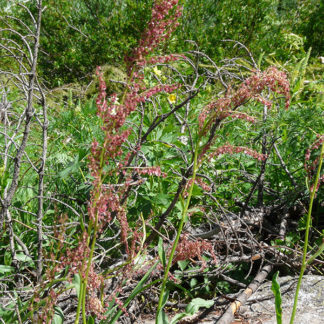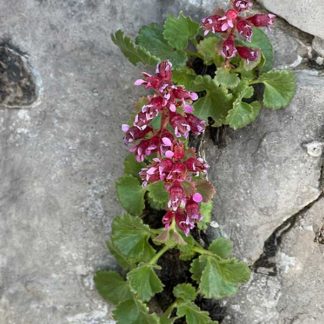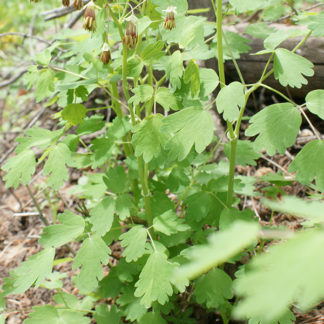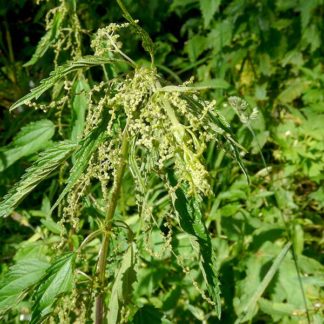panicle
Showing 25–36 of 38 results
-

Phalaris arundinacea / reed canarygrass
- large, coarse, erect grass
- long, flat blades with pointy tips... from base
- distinct ligule—membranous and long
- large but compact inflorescences (panicles)
- often in dense monocultures, e.g. on river banks
-

Phleum pratense / timothy
- tight, cylindrical flower head
- probably the most recognizable grass in the Valley
- pink stamens with prodigious pollen production in summer
- bulb at base of stem; brown leaf sheath bases
-

Poa bulbosa / bulbous meadow-grass
- short, tuft-forming grass
- funny-looking flower stalks... having bulblets instead of florets
- doesn't produce pollen or seeds
-

Rumex acetosella / sheep sorrel
- long, vertical inflorescences... not compact or well "organized"
- female plants with red/maroon flowers; males with green/white flowers
- especially visible when seeds are ripe... red
- basal rosette of arrowhead shaped leaves
- disturbed areas, wastelands, poor sites
-

Rumex crispus / curly dock
- rather large, lance-shaped leaves
- curly leaf margins, like crisped bacon or "crinkly-wavy"
- tall flowering stalks with many, many small yellow/green-ish flowers
- fruits are just like the flowers but deep red
- widespread and very much a weed
-

Scrophularia lanceolate / lanceleaf figwort
- teeny, snapdragon-like flowers
- flowers urn-shaped, mostly yellow, with red or green at the tips
- flowers look like they aren't yet opened
- flowers on elongated panicle at the top of a tall-ish plant
- opposite leaves like stinging nettle without the stingers
- up to 5 feet tall in full sun/partial shade
-

Solidago canadensis / goldenrod
- large sprays of yellow flowers in late summer and fall
- often tall and in large colonies
- lance-shaped, toothed leaves
- mostly (but not always) in disturbed areas
-

Solidago missouriensis / Missouri goldenrod
- perennial herb, up to 40" tall
- inflorescence is a branching panicle with many (≥200) yellow flower heads
- involucres are ¼ long with 3 or 4 layers of narrow, pointed, hairless, yellow-green bracts
- leaves are thin and lanceolate, upright and rigid with prominent midribs
- upper leaves have pronounced but small teeth
-

Sorbus scopulina / western mountain ash
- moderate sized shrub with pinnately compound leaves
- 9-13 leaflets per leaf (usually)
- teeny white flowers in large rounded clusters
- yellow berries in August become bright red in September
- rocky hillsides, creek sides, open woods
-

Telesonix heucheriformis / false saxifrage
- alpine or subalpine
- on scree, rock faces, cliffs, in cracks
- glandular, slightly lobed leaves (common for the family)
- teeny red or purple-ish flowers in large-ish clusters
- blooms in August at high altitudes
-

Thalictrum occidentale / western meadow-rue
- delicate compound leaves, each segment with 3 lobes
- leaves "look like" columbine
- male and female flowers on separate plants
- all flowers teeny, in clumps, somewhat to really purple
- in moist habitats, esp. stream banks in forests
-

Urtica dioica / stinging nettle
- near streams and moist bogs, in woodland understories, disturbed places, wastelands
- leaves - strongly serrated margin, a heart-shaped base, a pointed tip
- flower - greenish or brownish in dense dangling clusters
- nasty hairs that sting you
Showing 25–36 of 38 results